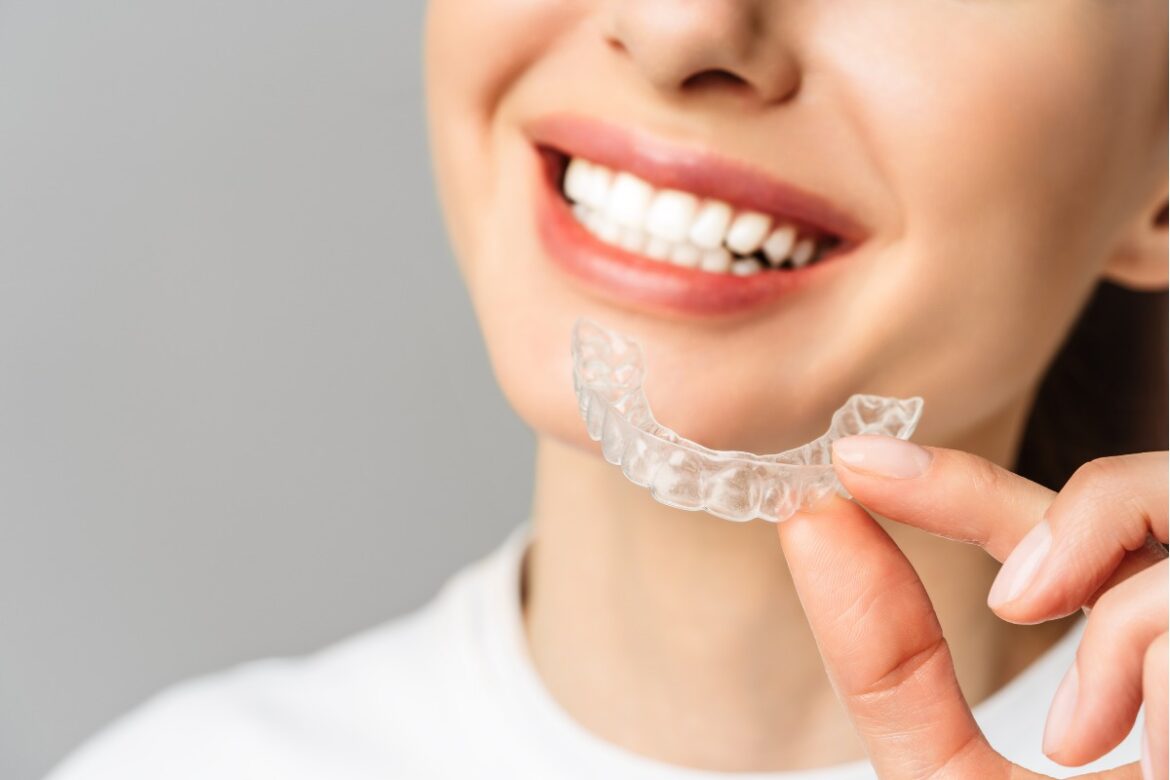When it comes to straightening your teeth and achieving that perfect smile, you have options. Two popular choices are Invisalign and traditional braces.
Both methods have their own set of advantages and considerations, so it’s essential to understand the differences between them before making a decision. Let’s explore the pros and cons of Invisalign versus traditional braces to help you determine which option is best suited for your dental needs.
Appearance and Comfort
One of the most significant differences between Invisalign Hamilton and traditional braces is their appearance and comfort level. Traditional braces use metal brackets and wires that are noticeable when you smile, whereas Invisalign aligners are made of clear, nearly invisible plastic. This makes Invisalign a preferred choice for those who are concerned about the aesthetic impact of braces.

In terms of comfort, Invisalign aligners are removable, which allows for easier cleaning of teeth and more comfortable eating. Traditional braces, while effective, can cause discomfort and irritation due to the metal components.
Treatment Process
The treatment process also varies between Invisalign and traditional braces. Invisalign involves a series of custom-made aligners that are changed approximately every two weeks to gradually shift teeth into the desired position. Each aligner is worn for about 20-22 hours per day and can be removed for eating and oral hygiene.
On the other hand, traditional braces are fixed onto the teeth and adjusted periodically by an orthodontist. This method may require more frequent visits to the dentist for adjustments and maintenance.
Effectiveness in Treatment
Both Invisalign Hamilton and traditional braces are effective in treating a wide range of dental issues, including crowding, spacing, overbites, underbites, and crossbites. However, the severity of your dental condition can sometimes determine which treatment option is more suitable.
Traditional braces are often recommended for complex cases where significant tooth movement is required. They can exert more force on teeth, making them suitable for treating more severe misalignments.
Invisalign is ideal for mild to moderate cases and may not be suitable for complex orthodontic problems. Your dentist or orthodontist will assess your dental condition and recommend the most effective treatment option based on your specific needs.
Convenience and Lifestyle
Another factor to consider is convenience and lifestyle impact. Invisalign aligners are removable, allowing you to enjoy your favorite foods without restrictions. You can also maintain your oral hygiene routine more effectively since you can brush and floss your teeth normally.
Traditional braces, however, come with dietary restrictions to avoid damaging the brackets and wires. They require extra care when brushing and flossing to prevent food particles from getting trapped.
Cost and Insurance Coverage
Cost is an essential consideration for many individuals seeking orthodontic treatment. In general, Invisalign tends to be more expensive than traditional braces due to the advanced technology and customisation involved. However, the cost can vary depending on the complexity of your case and your location.
It’s also essential to check your dental insurance coverage as not all plans cover Invisalign treatment. Traditional braces are often covered to some extent by insurance, making them a more affordable option for some patients.
Conclusion
Choosing between Invisalign and traditional braces ultimately depends on your personal preferences, lifestyle, and dental needs. Both options have their advantages and considerations, so it’s crucial to consult with your dentist or orthodontist to determine which treatment will yield the best results for you.
If you prioritise aesthetics, convenience, and comfort, Invisalign Hamilton may be the right choice. However, if you have complex orthodontic issues or prefer a more cost-effective option, traditional braces could be the better solution. Whatever you decide, investing in orthodontic treatment is an investment in your smile and oral health, so make sure to explore all options before making a decision.





